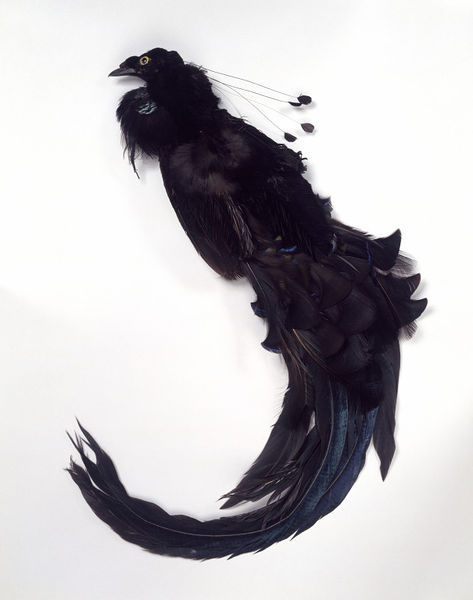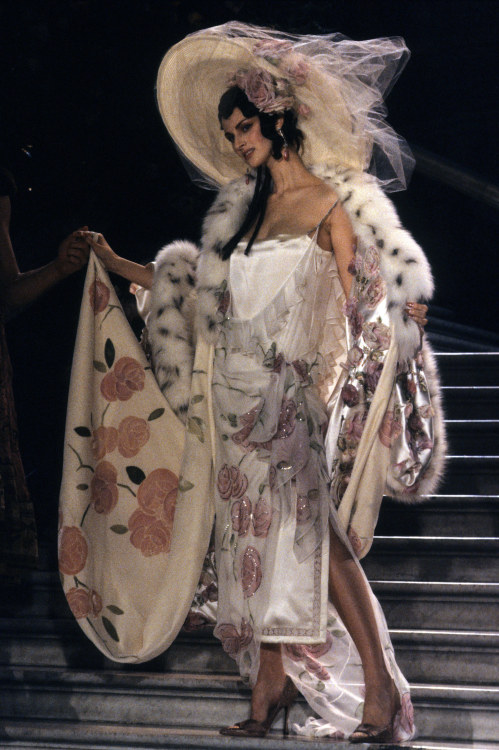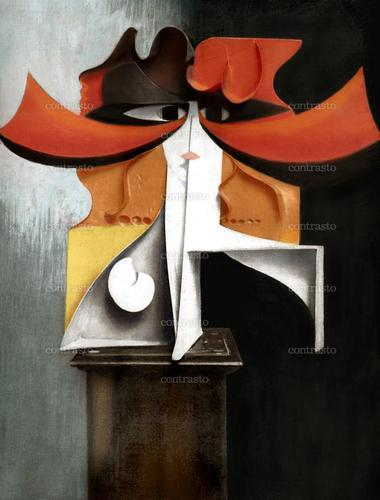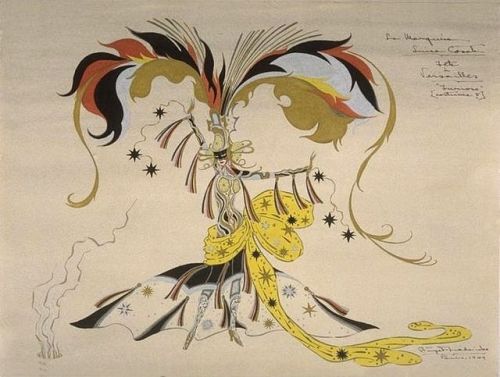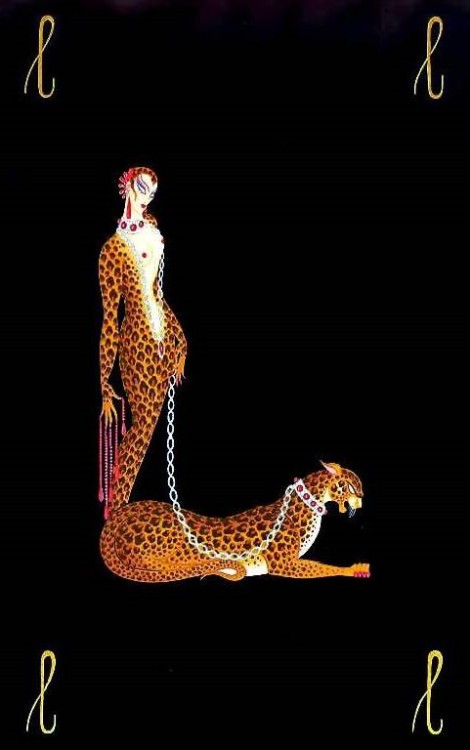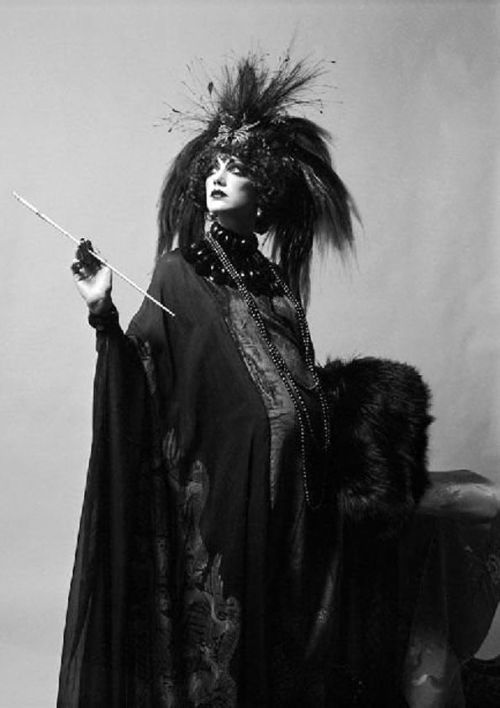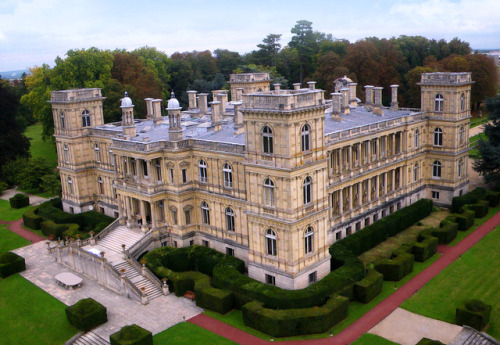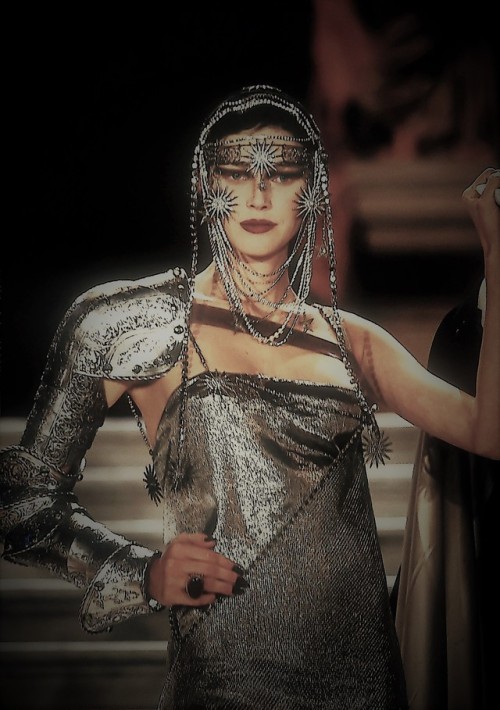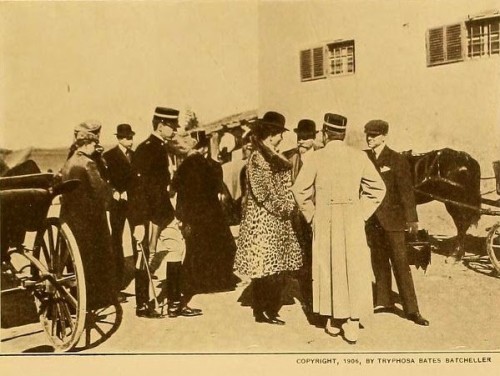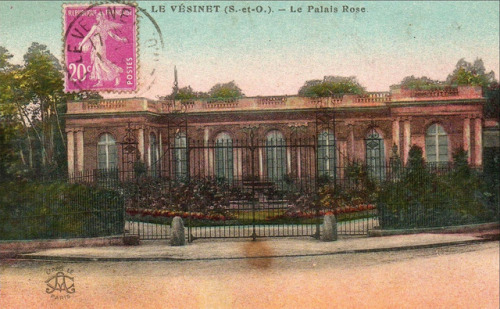#marchesa casati stampa
French Headdress made of mounted Bird of Paradise feathers, 1910s.
The design of this ornament is copied from one worn by the Marchesa Luisa Casati, a notorious eccentric and flamboyant dresser.
Victoria and Albert Museum, London.
Post link
John Galliano for Christian Dior, Haute couture, Spring Summer Collection, 1998.
Tribute to Marchesa Luisa Casati.
The Palais Garnier.
Post link
John GallianoforChristian Dior, Haute Couture, Spring Summer Collection, 1998.
Tribute to Marchesa Luisa Casati.
Opera Garnier, Paris.
Post link
Sarah Lipska,Masque de femme,Marchesa Luisa Casati, 1936-1937.
Centre Pompidou, RMN Grand Palais, Paris, France.
Post link
The Mysterious Sex Appeal of Gabriele D'Annunzio - Rogues Gallery Online.
Multi talented, charismatic and a bit of a Fascist, Gabriele D'Annunzio bedded over 1000 women (Marchesa Luisa Casati, Ida Rubinstein, Liane de Pougy, Isadora Duncan, Eleonora Duse, Luisa Baccara, Nathalie de Goloubeff, Franca Florio). His sensual secrets will amaze you.
Marchesa Luisa Casati had a long term affair with the author Gabriele D'Annunzio, who is said to have based on her the character of Isabella Inghirami in Forse che si forse che no (Maybe yes, maybe no) (1910).
Tom Ford and models, Spring Summer Collection 2011, Photo by Steven Meisel, Vogue, December, 2010.
To celebrate Tom Ford’s return to womenswear design after his six year absence, Vogue offered its readers a preview of the designer’s Spring 2011 collection photographed by Steven Meisel. Meisel’s image features Mr. Ford positioned amongst his designs in a fashion similar to Milton Greene’s portrait in 1960.
In homage to designer Norman Norell proudly standing amongst his muses: models dressed in his signature sequined sheath gowns along with the Marchesa Luisa Casati, portrayed in Kees van Dongen’s 1921 painting, The Quai, Venice. Photo by Milton Greene, Life Magazine, September, 1960.
Post link
DesignerNorman Norell proudly standing amongst his muses: models dressed in his signature sequined sheath gowns along with the Marchesa Luisa Casati, portrayed in Kees van Dongen’s 1921 painting, The Quai, Venice. Photo by Milton Greene, Life Magazine, September, 1960.
Norman Norell owned the portait of the eccentric Marchesa Luisa Casati (the same Marchesa who inspired the label Marchesa by Georgina Chapman and Keren Craig) and designed his Fall 1960 collection in her honor.
Post link
Georgina ChapmanasMarchesa Luisa Casati, Marchesa’s Moment, Harper’s Bazaar, Photo by Peter Lindbergh, March 2009.
In homage to Marchesa Luisa Casati dressed as Empress Elisabeth of Austria (Sissi) in a Photo by Man Ray in 1927.
Post link
Giacomo Balla,Marchesa Luisa Casati with eyes of Mica and the wooden heart at 2nd Futurist art exhibition in Rome, IL MONDO Cover, March 1919.
©contrasto
Post link
Jan Styka,Marchesa Luisa Casati, Capri, 1919-1920.
Collection of Dr. & Mrs R. Winter, New York.
Post link
Marchesa Luisa Casati as Empress Theodora wear a crown formed of eagles, 1905.
On March 2, 1905, Tryphosa Bates Batchellerwrites:
It was supposed to be a ball characterized by the fancy dressing of the head and hair, but, as a matter of fact, most of the women came in elaborate and beautiful costumes. Far and away the most elegant and most beautiful costume was worn by the Marchesa Camillo Casati, of the famous Casati family of Milan. She was dressed as the Empress Theodora, in a perfect fitting princesse gown of cloth of silver heavily embroidered in gold. The costume was an exact reproduction of one worn in Paris by Sarah Bernhardt a short time ago. The Marchesa wore on her head a crown formed of eagles, and had some of her diamonds set up in a large diamond eagle, which was her only corsage ornament. Two or three ropes of her wonderful and famous pearls hung loosely about her beautiful neck, and altogether she was quite the most stunning persona at the ball. She is a handsome woman, tall and slight, with a beautiful figure and splendid carriage. Her hair is a light chestnut color, and she is always pale, though her paleness is of that attractive sort that does not indicate ill-health. She is said to be one of the best dressed women in Rome on all occasion.
Post link
Federico Beltran Masses,La nuit d’Eve,Marchesa Luisa Casati, 1929.
Oil on canvas, 99 x 101 cm.
Barcelona, Colleciò Suñol.
Illustration for Les Fleurs du mal (The Flowers of Evil) by Charles Baudelaire, 1946.
Post link
Joseph Paget-Fredericks, Marchesa Luisa Casati - Fête à Versailles (Party at Versailles), furious costume, 1927.
The Bancroft Library, Berkeley, California.
Post link
Art deco design Alphabet L for Luisa and Leopard by Erté (Romain de Tirtoff)
Media : Graphic Edition, Lithograph/Serigraph
Dimensions : 15 ¾ X 10 ½ Inches
Year Produced : 1976
Edition Size : 350 Numbered, I-XC Roman Numerals
Current Retail : $11,250.00
Tribute to Marchesa Luisa Casati.
Post link
Marisa Berenson in a Paul Poiret dress as the Marchesa Luisa Casati for the Proust Ball at the Rothschild family’s opulent Château de Ferrières in France, Photo by Cecil Beaton, December 1971.
Tribute to Marchesa Luisa Casati.
Marisa Berenson went as Marchesa Luisa Casati to The Proust Ball—the idea of costume designer Piero Tosi, with whom Berenson had just worked on the film Death in Venice. “You are not going to go like all those other women,” he proclaimed, instead dressing her in a Paul Poiret dress adorned with jeweled snakes, a curled red wig, black lipstick, and a black tiara. “When I walked in, nobody recognized me,” she says. “I had so much fun because I was totally sticking out from everybody else.
The Proust Ball (Le Bal Proust ), December 2, 1971.
The Proust Ball, thrown in honor of the 100th anniversary of Marcel Proust’s birth in 1871, might be considered Marie-Helene de Rothschild’s greatest triumph. Around 350 guests attended the extremely rich dinner at her home outside of Paris, the Château de Ferrières, with 350 or so more arriving in time for a second, later dinner. Among the guests were Audrey Hepburn, Princess Grace of Monaco, Elizabeth Taylor, and Richard Burton, while Cecil Beaton was the night’s photographer. French model and actress Marisa Berenson remembers the night, saying, “As soon as you arrived at Ferrières it was like going back in time, but more luxuriously with highly refined taste… . The women wore dresses, bodices, big headdresses, tiaras, lots of jewelry. It was truly the era of Proust.” (x)
Guests at her other balls included Yul Brynner, Brigitte Bardot, Gregory and Veronique Peck, Rudolf Nureyev, Elizabeth Taylor, Richard Burton, Serge Gainsbourg, Jane Birkin, Cecil Beaton, Princess Grace of Monaco and the Duchess of Windsor.
Post link
John GallianoforChristian Dior, Haute Couture, Spring Summer Collection, 1998.
Tribute to Marchesa Luisa Casati.
Opera Garnier, Paris.
Post link
Costume design sketch by Léon BakstforMarchesa Luisa Casati,Queen of the Night costume from the opera The Magic Flute(1791)by Wolfgang Amadeus Mozart, 1920.
Post link
Marchesa Luisa Casati in leopard-skin coat, Photo by American socialite, club woman and concert singer Tryphosa Bates Batcheller, 1906.
American socialite Tryphosa Bates Batcheller runs into Luisa Casati again on March 23, 1905, writing:
“We have just come in from the last hunt of the season, and a very pretty and brilliant sight it was, too. …You remember about my speaking of the Marchesa Luisa Casati with her lovely gowns and jewels, but I forgot to say then, that she is one of the finest horsewomen in Italy. I am sending you a little picture that shows her in her long leopard-skin coat, just as she rode out in her carriage to the meet before mounting.”
Post link
Marchesa Luisa Casati in a fountain dress made of wires and lights by couturier Paul Poiret, at the Beaumont Ball held by the Count Etienne de Beaumont in Paris, 1924.
The Beaumont Ball in Paris 1924 (an event with a guest list so selective that Gabrielle Coco Chanel was excluded for being too ‘trade’), was a homage to Pablo Picasso and theCubists. The dress made entirely from wires and lights, it was too wide for the entrance to Beaumont’s ballroom: the artist Christian Bérard, who witnessed Marchesa Luisa Casati attempting to squeeze through the doorway, reported that she collapsed like a “smashed zeppelin”. (x)
De Beaumont’s fêtes reached an apex in 1924 with the ballet series Soirées de Paris, which took place at the Théâtre de la Cigale in Montmartre from May 17 to June 30, 1924. An homage to the review of the same name by Guillaume Apollinaire, the series included the scandalous ballet Mercure, which featured music composed by Erik Satie, sets and costumes designed by Pablo Picasso, and choreography devised by Léonide Massine. (x)
Post link

